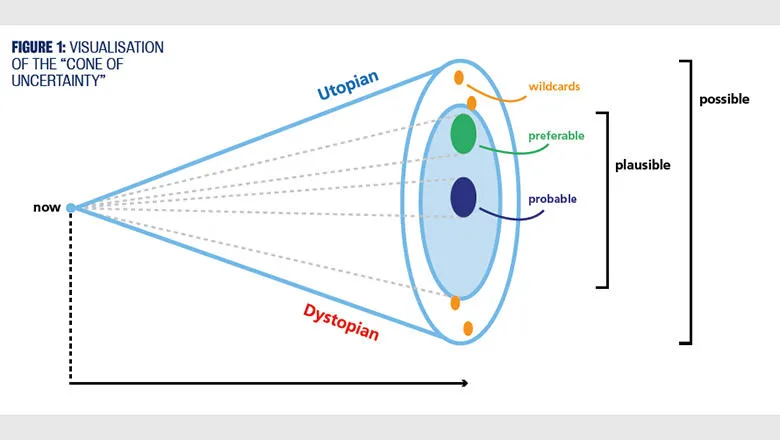Too often healthcare is spoken of as a cost to the state and society, rather than an investment that generates returns for individuals, communities, businesses and the nation.
Professor Dame Sally Davies
08 July 2019
Better health is within our reach – but it requires us to properly plan for the future
Professor Dame Sally Davies
SALLY DAVIES: "Futures thinking" can help create a better and more equitable health service

This piece was originally written for the Policy Institute's new Policy Review publication, which features essay contributions on a range of different issues by the institute’s researchers and Visiting Faculty.
Read the full collection of essays.
Too often healthcare is spoken of as a cost to the state and society, rather than an investment that generates returns for individuals, communities, businesses and the nation. The NHS and public health services are not a burden on our finances – they help to build our future.
In my latest Chief Medical Officer annual report, I looked at the future health of England’s population.1 I wanted to take an aspirational view of what health could and should look like in 2040 if we commit to it being our nation’s primary asset.
As we look to 2040, the evidence suggests that we are currently at a fork in the road, with two vastly different – but equally plausible – scenarios on the horizon. One concerns me: if certain trends were to continue and even worsen, we could end up in a situation where the most deprived continue to lose out. The gap in life expectancy could worsen substantially, aggravated by a digital divide – we must not let this unfair future be our reality.
The alternative is that our society prioritises health as one of the nation’s primary assets. This society would generate health gains, as well as reductions in health inequalities, through a “prevention first” approach. We can and should make it easier for people to be healthier. We should, for example, continue to develop fiscal measures that incentivise food companies to improve access to foods of high nutritional value, while at the same time disincentivising the production and sale of energy-dense and high-sugar products. Structural approaches are more likely to improve population health and reduce diet-related inequalities than interventions focused on the choices that individuals make.
In our future, prevention should also be personal to the individual, with such measures underpinned by a “health-promoting environment”. This is a future within our reach, but only if we consider the future and uncertainties that could affect health. So how can we plan effectively to ensure we are prepared for an uncertain future?
The consideration of activities and environments in light of whether they are health-promoting or health-harming, and how much uncertainty they contain, should be prioritised in research and policy. “Futures thinking” is an important part of this planning, helping us to imagine what different futures might bring.
The Policy Institute and Behavioural Insights Team have visualised this process as a “cone of uncertainty”, which helps us to consider different health futures in 2040. The issues that seem most important today can make it harder to think about what might be most relevant for the future. But by acknowledging trends in the health of the population today and imagining the different outcomes they may lead to – from those which are quite likely, to potentially more uncertain, disruptive futures – we are able to tell stories about possible futures which can help us anticipate and plan more effectively.
The top of the cone presents the best case, or “utopian”, outcome that we might hope for. In contrast, the bottom of the cone represents the worst case, or “dystopian”, scenario. Such a process allows the identification of research and policy considerations to ensure we set the foundations to plan for and protect a healthier future for all. The cone was used in my report to examine three areas of interest – anti-microbial resistance (AMR), obesity and the impact of technology on mental health.

In my 2011 annual report, I identified AMR as a leading threat to our future infection prevention, diagnosis and appropriate effective treatment. We are now certain that without significant action, AMR will have a substantially damaging effect upon future health and the global economy.
The future is less clear for obesity. While a dystopian scenario where obesity is the greatest cause of preventable deaths and disability is possible, this is not inevitable; embracing and scaling up the population approaches to obesity and creating a health-promoting environment would allow England to lead the world in successfully changing behaviours and tackling obesity.
In contrast, the future impact of technology on mental health is very uncertain. There is concern about the potential harm of technologies, particularly the impact of social media on mental health, and it is important to assess the evolving evidence. Further, we must remain cognisant of avoiding a “digital divide”, which could reshape health inequalities in the coming decades. However, the “connected world” also has the potential to transform mental and other health services and address social isolation.
Once created, scenarios can be used for a number of purposes. Sometimes they can help think through potential risks. Sometimes they can be used to generate new ideas. And sometimes, they enable a group to come to a collective vision of the future they want to try to create. Much of the value of this type of scenario planning process is in bringing together stakeholders with very different viewpoints and curating relationships that will enable the health system to nimbly adapt to whatever the future ultimately turns out to be.
Such a dialogue – between the public, patients, clinicians, policymakers and politicians – will be critical to securing the health of the nation and ensuring a successful and sustainable NHS and health system. It seems essential that futures thinking should be a mainstream activity for health planning in England and will strengthen the policy process by bringing the full range of stakeholders together to consider the challenges and opportunities the future may hold.
It is realistic to aspire to better and more equitable health in the next 20 years. Every part of the health system has a role to play in creating a healthier and fairer future. The fortunate truth is that we already know how to make fantastic improvements and prepare for better health that is within our reach. The green shoots of a brighter future are already visible in some parts of our health system. Now we need to develop, plan and scale, harnessing technology to help them grow.
Professor Dame Sally Davies is Chief Medical Officer for England, and Visiting Professor at the Policy Institute, King’s College London
